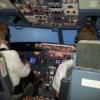
Sign in to follow this
Followers
0

Why is It impossible to make a VFR flight plan with a VFR flight level ?
By
Branech, in Pilot2ATC Users Forum


By
Branech, in Pilot2ATC Users Forum